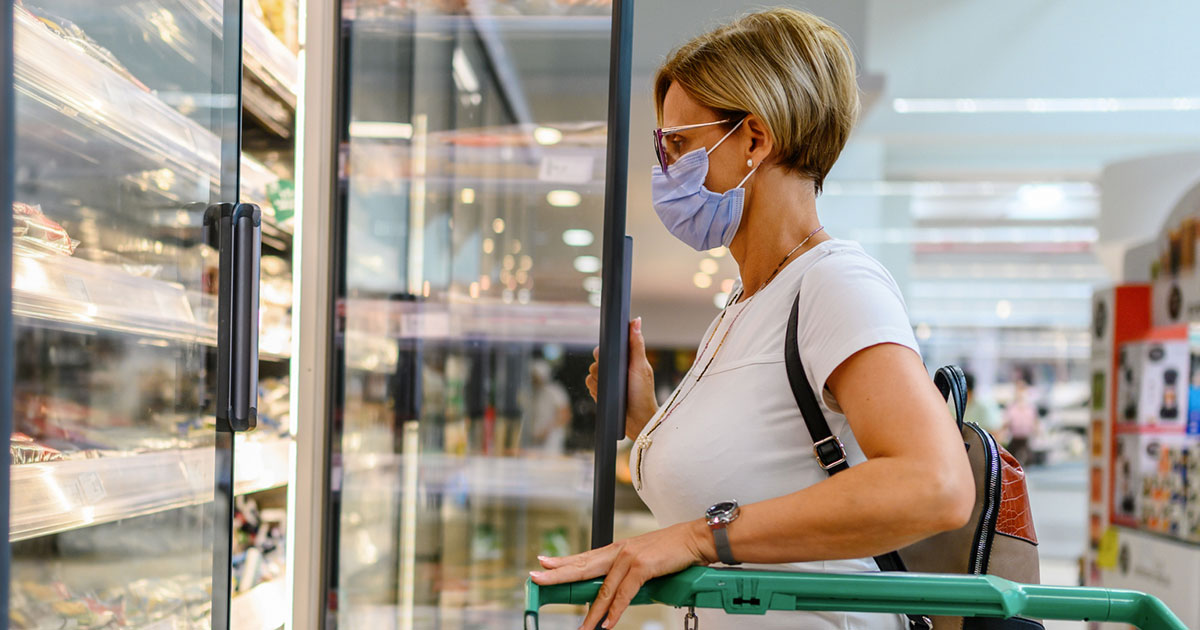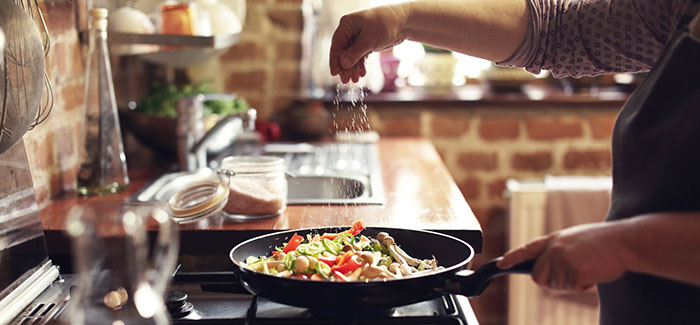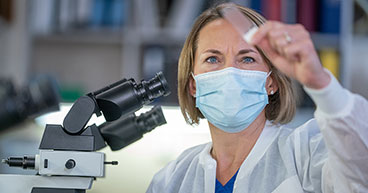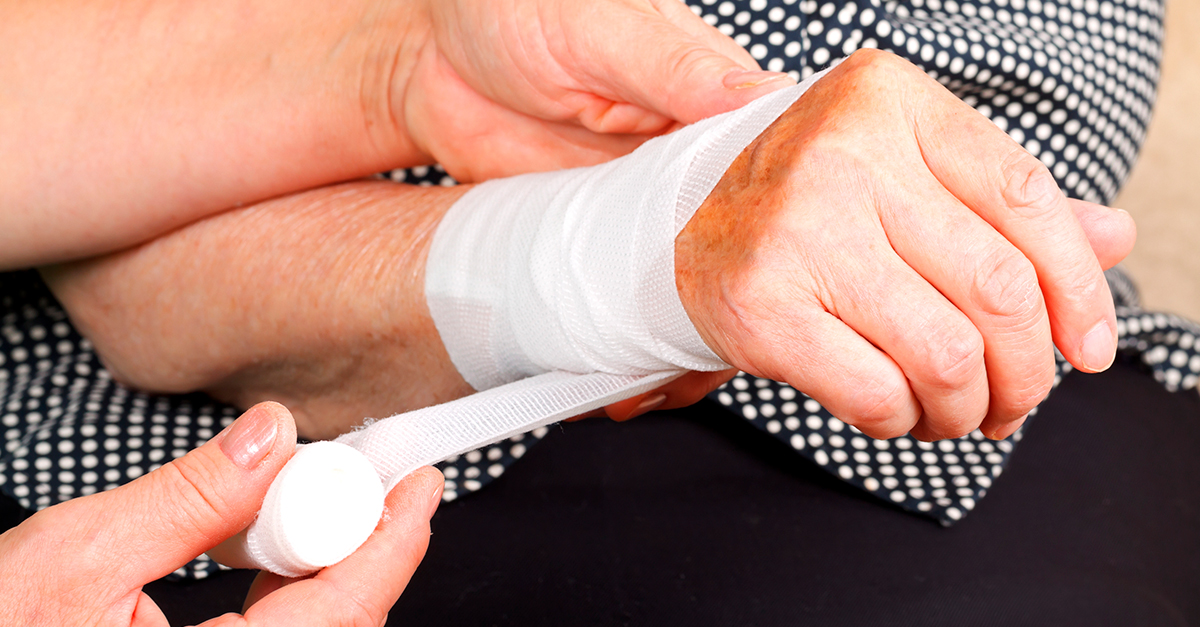
If you’ve been diagnosed with cancer, you may already be dealing with side effects of treatment, like nausea and vomiting, fatigue or a weakened immune system. Certain treatments, like chemotherapy, radiation therapy and immunotherapy, may affect how well your immune system works, which may lead to leukopenia—when your white blood cell count is lower than normal, which means your body’s ability to fight infection isn’t as strong.
Neutrophils are a type of white blood cell that are especially important in fighting infection—specifically infection caused by bacteria. During cancer treatment, your care team may regularly monitor your neutrophil count. If your counts are low, it means you have neutropenia—a type of leukopenia specific to neutrophils—and are more vulnerable to infection.
Neutropenia in cancer patients is common, affecting half of those treated with chemotherapy to some degree, in fact. That’s why it’s important to take precautions to lower your risk of infection. If you have neutropenia, your health care provider may suggest a neutropenic diet, a modified neutropenic diet or following food safety guidelines.
In this article, we’ll explore:
- What is the neutropenic diet?
- What to eat on a neutropenic diet
- What to avoid on a neutropenic diet
- Does the neutropenic diet benefit cancer patients?
- Safe food preparation tips for cancer patients
If you’ve been diagnosed with cancer and are interested in a second opinion on your diagnosis and treatment plan, call us or chat online with a member of our team.
What is the neutropenic diet?
Also called the low-bacterial diet or the low-microbial diet, the neutropenic diet was first introduced in the late 1960s, when researchers identified a relationship between low neutrophils and infection risk. To reduce infection risk in people with neutropenia, health care providers began recommending the neutropenic diet, which is designed to exclude foods and drinks that may introduce bacteria into the gastrointestinal tract.
The diet includes well-cooked foods and avoids raw fruits and vegetables (including juices), undercooked eggs, unpasteurized dairy products, deli meats and undercooked meats. The most common foods restricted by the diet are raw fruits and vegetables, which are replaced by cooked, canned or prepackaged foods.
What to eat on a neutropenic diet
Here are some of the foods included on a neutropenic diet:
- Specific dairy products, including milk, cheese, yogurt and ice cream
- Starches, including bread, cooked pasta, whole grains, beans, corn and peas
- Cooked vegetables
- Canned or frozen fruit and fruit juices, or washed and peeled fruits like bananas, oranges and grapefruit
- Cooked and canned meats, hard-cooked or hard-boiled eggs and pasteurized egg substitutes
- Water, canned or bottled drinks and instant or brewed tea or coffee
What to avoid on a neutropenic diet
Here are some of the foods you should avoid when following a neutropenic diet:
- Unpasteurized milk and yogurt, yogurt made with live or active cultures, aged cheeses, soft cheeses like Brie or feta, as well as cheeses with mold like Gorgonzola or blue cheese
- Breads with raw nuts, raw oats or grains
- Raw vegetables, salads, fresh sauerkraut and uncooked herbs and spices
- Unwashed raw fruits, unpasteurized fruit juices and dried fruits
- Raw or undercooked meat, deli meats, sushi, cold meat and undercooked eggs
- Sun tea, cold brewed tea, eggnog made with raw eggs, fresh apple cider and homemade lemonade
Does the neutropenic diet benefit cancer patients?
To date, there hasn’t been much research on the benefits of the neutropenic diet in cancer patients, so some health care providers say it’s not worth imposing restrictions. That’s why many cancer centers and other health care institutions use modified versions of the diet based on U.S. Food and Drug Administration (FDA) food safety guidelines.
When there’s wiggle room, a good rule of thumb is to avoid using a one-size-fits-all approach to diet plans, says Kara Sonntag, RD, Advanced Dietitian a City of Hope Atlanta, Chicago and Phoenix. The neutropenic diet may make sense for certain cancer patients, she points out, but others may benefit from the ability to choose from a greater variety of foods and nutritional sources.
“As much as possible, we want cancer patients to eat as much as they want, whenever they want,” Sonntag says. “It’s important to broaden their options when they may be struggling to eat in the first place.”
Regardless of diet, following safe food handling guidelines is key, she adds.

Safe food preparation tips for cancer patients
Each year, roughly 48 million cases of foodborne illness are reported in the United States—meaning they sicken about one in six Americans a year. Symptoms of foodborne illness include:
- Abdominal pain
- Body pain
- Diarrhea
- Fever
- Headache
- Vomiting
Although most healthy people recover from foodborne illnesses relatively quickly, some develop chronic or severe health problems. Certain people are also at a higher risk of developing foodborne illnesses. These people include:
- Older adults
- People with weakened immune systems (such as patients who have undergone a stem cell transplant or who have HIV/AIDS, cancer or diabetes)
- Pregnant women
- Young children
The FDA developed safe food handling guidelines designed to protect people, including those with neutropenia, from infection. Simply follow these four steps:
Clean
- Wash your hands with warm water and soap for at least 20 seconds before and after handling food. Also wash them after using the bathroom, changing a diaper or touching a pet.
- Wash your cutting boards, dishes, utensils and countertops with warm, soapy water after preparing food.
- Use paper towels to clean kitchen surfaces. If you use cloth towels, wash them frequently with hot water.
- Use running water to rinse fresh fruits and vegetables, including those with skins and rinds you don’t eat. Scrub firm produce, such as potatoes or yams, with a clean produce brush.
- Clean the lids of canned goods before opening.
Separate
- Separate raw meat poultry, seafood and eggs from other foods in your grocery cart, grocery bag, refrigerator and countertops.
- Use one cutting board for fresh produce and one for raw meat, poultry and seafood.
- Never place cooked food on a plate that previously held raw meat, poultry, seafood and eggs unless it’s first washed in hot, soapy water.
- Don’t reuse marinades used on raw foods unless you first bring them to a boil.
Cook
- Cook foods to the recommended temperatures.
- Don’t depend on color and texture as reliable indicators of safety. Instead, use a food thermometer to ensure the safe temperatures of meat, poultry, seafood and eggs. These foods must be cooked to a safe minimum internal temperate to destroy harmful bacteria.
- Cook eggs until the yolk and whites are firm. Only use recipes that involve cooking and heating eggs thoroughly.
- When cooking in a microwave, cover food, stir and rotate for even cooking. If your microwave doesn’t have a turntable, rotate the dish once or twice by hand during cooking.
- Allow for standing time so the food can finish cooking before checking the internal temperature with a food thermometer.
- When reheating, bring sauces, soups and gravy to a boil.
Chill
- Refrigerate foods promptly.
- Use an appliance thermometer to be sure the temperature is consistently 40 degrees Fahrenheit or below and the freezer temperature is 0 degrees Fahrenheit or below.
- Refrigerate or freeze meat, poultry, eggs, seafood and other perishable foods within two hours of cooking or buying. Refrigerate within one hour if the air temperature outside is higher than 90 degrees Fahrenheit.
- Never thaw food on the countertop or at room temperature. Instead, defrost food in the refrigerator, in cold water or in the microwave. Immediately cook food thawed in cold water or in the microwave.
- Always marinate food in the refrigerator.
- Divide large amounts of leftovers into shallow containers for quicker cooling in the refrigerator.
If you’ve been diagnosed with cancer and would like to learn more about our treatment options at City of Hope, or if you’re interested in a second opinion about your cancer diagnosis and treatment plan, call us or chat online with a member of our team.




